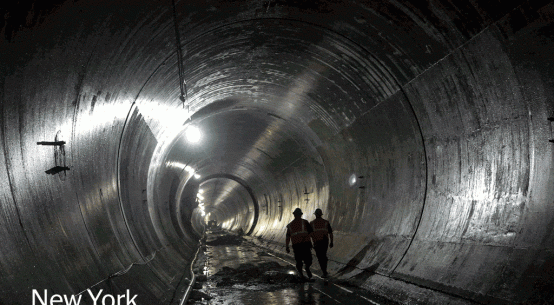
General Motors just unveiled a self-driving car with no steering wheel or pedals – or basically any other manual controls. It’s called the Cruise AV
The future of driving doesn’t involve driving — at all.
That’s the big takeaway from a first peek inside General Motors new autonomous car, which lacks the steering wheel, pedals, manual controls and human drivers that have come to define the experience of riding inside an automobile for more than a century.

The means the Cruise AV — a fourth-generation autonomous vehicle based on the Chevy Bolt EV — is in total control.
GM submitted a petition Thursday to the Department of Transportation, asking for the government to let it roll out the new vehicle, which it says is safe. GM plans to mass produce the vehicle as early as next year, the automotive giant announced Friday. The manufacturer is touting the vehicle as the world’s “first production-ready vehicle” built with the sole purpose of operating “safely on its own with no driver,” a degree of independence known as “level 4 autonomy.”
GM is one of several companies testing level 4 vehicles. A California-based autonomous vehicle startup called Zoox and Alphabet’s Waymo have also tested level 4 cars.
“We view this as being a very important next step in our plan to deploy self-driving vehicles at scale in 2019 and it’s all part of our mission to move to a world of zero crashes,” said Ray Wert, head of Storytelling and advanced technology communications at GM.
[GM could launch its own autonomous ride-hailing service as early as 2019]
GM is already testing second and third generation self-driving Cruise AVs on busy streets in San Francisco and Phoenix with a human engineer in the vehicle. It relies on cameras, radar and high-precision laser sensors known as lidar for navigation.
Beginning in 2019, the fourth-generation of that vehicle will be used in a ride-sharing program in multiple American cities, where “the vehicles will travel on a fixed route controlled by their mapping system,” Bloomberg reported.
To improve safety, the vehicles will share information with one another and rely on two computer systems, which operate simultaneously so that if one computer encounters a problem, the second computer can serve as a backup, according to GM’s self-driving safety report.
The report says the Cruise AV was designed to operate in chaotic, fluid conditions, such as aggressive drivers, jaywalkers, bicyclists, delivery trucks and construction.
“With its advanced sensor systems, the Cruise AV has the capability to see the environment around it, in 360 degrees, day and night,” the safety report adds. “It is designed to identify pedestrians in a crosswalk, or an object darting suddenly into its path, and to respond accordingly. It can manoeuvre through construction cones, yield to emergency vehicles and react to avoid collisions.”
As The Washington Post reported last month, the ambitious timeline GM has set for getting the Cruise AV on the road could place the automaker in an enviable position — the unique ability to provide existing ride-hailing companies such as Lyft or Uber with a growing fleet of autonomous vehicles or, better yet, to unleash GM’s own service.
For more Logistics News, Follow us on TWITTER Follow us on FACEBOOK
The company has access to vast dealership networks, nationwide influence and manufacturing prowess, potentially offering a GM-driven ride-hailing service the opportunity to supplant the Silicon Valley start-ups that have been seeking for years to disrupt the auto industry.









